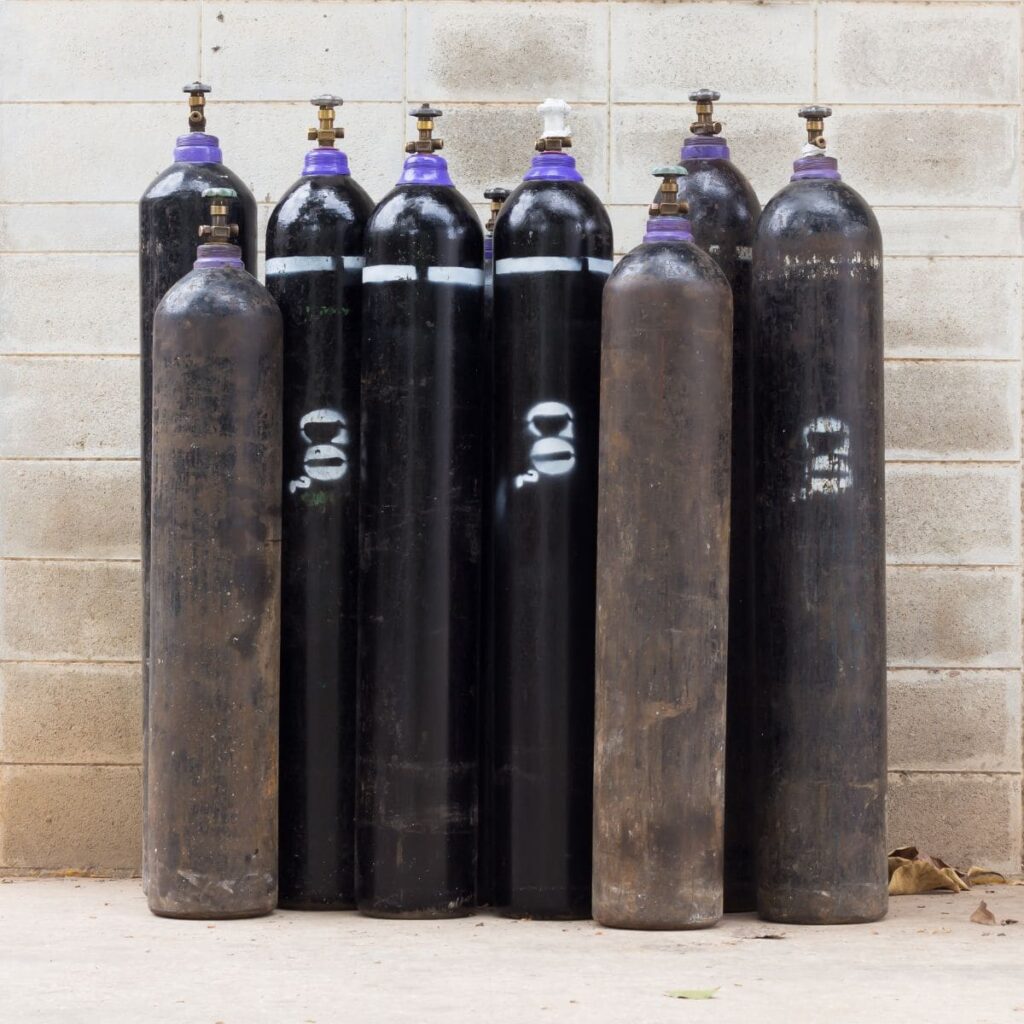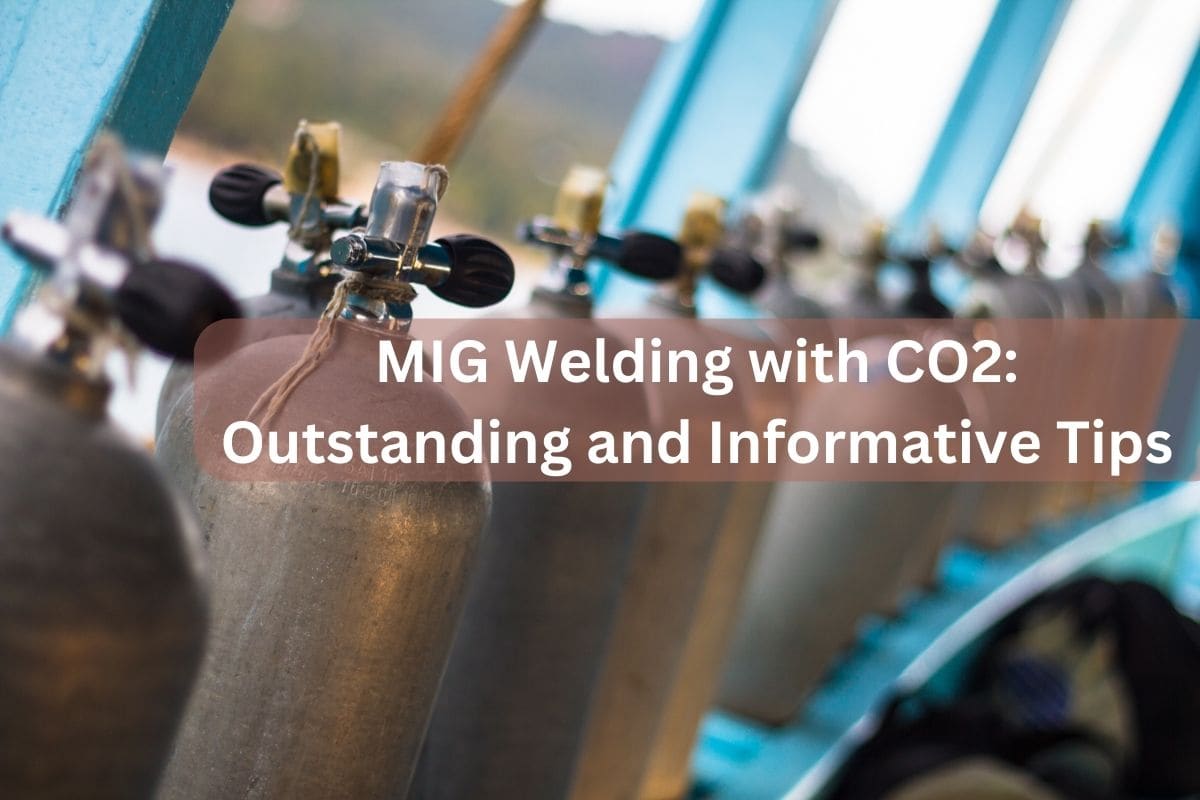MIG welding with CO2 is like the secret sauce many welders are curious about but might be hesitant to dive into. Here, we’ll demystify the practice, laying out both its advantages and challenges.
Whether you’re a budding welder or someone with more experience, this guide will give you a clear perspective on why and how to use 100% CO2 in your welding projects.
Why Opt for MIG Welding with CO2?

Embarking on a welding project soon? You might be weighing your options on which gas to use. CO2 has been catching the attention of many in the welding community, and there’s a reason for that.
Read Also : MIG Welding Aluminum Without a Spool Gun: Important Tips
Let’s take a moment to understand why CO2 could be a fantastic choice for your MIG welding endeavors.
- Economic Benefits
Ah, the charm of saving some bucks! CO2 is a clear winner when you look at your wallet. It’s way more cost-effective than Argon/CO2 blends.
This isn’t just about pinching pennies. For those on a tight budget or just starting out, the savings can indeed make a difference.
- Universal Availability
Imagine running out of gas in the middle of a project. Nightmare, right? With CO2, you’re in safer waters. This gas is everywhere.
Its use in various industries means you won’t be left scrambling for a refill. From the local welding supplier to the corner homebrew shop, you’re covered.
- Project Versatility
Not every project is a mission to Mars. Some need precision, and some, well, just need to get done. For those tasks where structural demands are a bit relaxed, MIG welding with CO2 is like your trusty old pal. It gets the job done without making a fuss.
What Makes CO2 Stand Out?
Okay, so you’re considering giving CO2 a shot in your welding projects. But with all the options out there, what makes CO2 the go-to choice for many welders?
Let’s shine a light on the standout qualities of CO2 and see if it aligns with what you’re looking for.
- Impressive Performance
When it comes to CO2, it’s not just about cost savings. This gas brings its A-game to the welding table. Offering deeper joint penetration ensures your welds are solid and robust.
Speed up your welding with CO2, and if you’re concerned about contaminants, its aggressive cleaning action is like a built-in quality check. It’s clear; CO2 is not just any regular gas; it’s a performer.
- Convenience and Flexibility
Let’s talk about the ease of life with CO2. Those compact CO2 tanks? They’re a dream to transport.
And when you’re out and about, hunting for a refill isn’t a treasure hunt. With refill options as diverse as sporting goods stores and homebrew shops, you’ve got a buffet of choices.
This means less downtime and more time doing what you love – welding.
- A Green Check for Environmentalists
Here’s a bonus. CO2, being a natural component of our atmosphere, has a lesser environmental impact when compared to some exotic gas mixtures.
So, for those of you who like to keep things green and care about Mother Earth, this is an added tick in the pros column for CO2.
The Right Equipment for MIG Welding with CO2
Dipping your toes into CO2 MIG welding? Awesome choice! But like any craft, having the right tools makes all the difference.
Let’s delve into the must-haves for this welding journey to ensure you’re well-equipped and set for success.
- Selecting the CO2 Grade
Now, you may wonder, “Isn’t CO2 just CO2?” Well, there’s a bit more to it.
While CO2 is a single component gas, it comes in different purity levels. Both industrial and food-grade are good to go for welding.
So, you have some flexibility here. But always ensure you’re getting a reliable supply; quality matters.
- MIG Welders with Fine Controls
As with any art, the magic often lies in the nuances. This is where a MIG welder with adjustable settings comes to your rescue.
The varied nature of CO2 means you’ll need to tweak settings for that perfect weld. A machine that offers that flexibility? That’s gold!
- Regulators and Adapters
Not all gas tanks are created equal. The regulators meant for CO2 can differ from those used for Argon/CO2 blends. You might even need an adapter for certain regulators.
It’s like ensuring your plug fits the socket. A small detail, but it can save you from unwanted hiccups down the road.
Read Also : MIG Welding Tips and Tricks: Important for Ideal Welding
Characteristics and Challenges for MIG Welding with CO2
Embarking on the CO2 MIG Welding journey?
It’s a thrilling path, but like any adventure, it’s best to know the lay of the land. CO2 brings with it unique traits and a few hiccups you might want to watch out for.
Let’s break down what’s in store to help you navigate smoothly.
- Distinctive Arc Characteristics
Let’s start with the arc. CO2 is a bit of a wild child here. It tends to produce an arc that can be rougher and more inconsistent.
This might sound intimidating, but it’s just a quirk you’ll get used to. The weld bead? Typically wider with that deep penetration we love. So, there’s a bit of give and take.
- Droplet Dynamics
Delve a bit deeper, and you’ll notice CO2 offers a globular arc transfer. What’s that, you ask?
It means the molten droplets are larger in size. While it’s a characteristic of CO2, with a little practice, you can make this work in your favor.
- Voltage and Settings
Here’s where your attention to detail will shine. CO2 often demands a bit more voltage and fine-tuning of the settings.
It’s like finding the sweet spot on a guitar string to get that perfect pitch. Spend some time getting familiar, and soon, you’ll hit the right notes every time.
- Navigating Challenges
Like any technique, there are challenges to contend with. CO2 can be a bit like a temperamental artist – amazing output but needs just the right conditions.
Its smaller sweet spot for optimal settings requires patience. And for thin materials? Maybe not the best fit.
But remember, every challenge is an opportunity in disguise. With every weld, you’re learning, adapting, and mastering the craft.
While CO2 does have its quirks, don’t let them deter you. Many welders have embraced its distinctive traits and turned them to their advantage.
Read Also : GAS vs Gasless MIG Welding: Important Differences Revealed
Additional Pro Tips for MIG Welding with CO2
Venturing into the world of CO2 MIG welding? Fantastic! But, like any craft, there are always those little nuggets of wisdom that can make your experience smoother.
We’ve gathered some pro insights to keep you ahead of the curve. Let’s unwrap these golden tidbits!
- Frosty Regulators: Noticed your CO2 regulators frosting up? Don’t panic! Due to high flow rates and certain environmental conditions, this can happen. It’s not a defect, just a trait of CO2 in action. Keeping an eye on this can help you adjust conditions or flow rates accordingly, ensuring a smooth welding process.
- Cylinder Swapping: Here’s a hint that can save you from potential setbacks: don’t wait until your CO2 cylinder is bone dry. When the pressure drops to around 200 psi, consider that your cue to swap. This ensures consistent gas flow and quality of welds.
- Carbon Considerations: CO2 has a little secret. It can introduce extra carbon into your welds. Now, this might affect the ductility of some low-alloy steels. Being aware of this helps you make informed decisions about the materials you’re welding.
Concluding Thoughts
Embracing MIG Welding with CO2 is like adding another feather to your welding cap.
While it has its set of challenges, the cost savings and other benefits can make it a worthy addition to your skill set.
Remember, every welding technique requires practice and patience. So, whether you’re using CO2 or any other gas, keep honing your skills, stay curious, and never give up. The world of welding awaits your creations!


